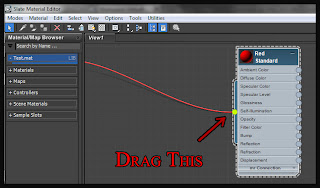Mostly when someone asks something like:
"UNITS IN UDK????!!!!!1"
But people occasionally don't understand this, and this confusion arises because what they really wanted to know is:
"What are the real world units of the default assets in UDK?"
Now this is a different question entirely.You see the first question assumes you're making your own units and you could simply say to yourself that I'm going to make 1unit = 1cm in game or i'm going to make 2cm = 1 unit in game.
and there is nothing wrong with that. 1 max unit = 1 unit in game. In other words whatever you set is the correct scale, you choose.
Quote:
"In all of the Unreal Tournament games, 1 Unreal Unit is equal to 2 cm.
In Gears of War
approximately 2 Unreal Units equal 1 inch, because the characters are
156 units tall and a floor of a building is 256 units tall. This was
decided on for grid purposes and so our cover height worked out well.
The values for gravity were not based on reality, but on what felt right.
Most licensees use a scale of 1 Unreal Unit to 1 cm" From UDN page
Landscape Scale
A landscape is made up of 3 things, components, sections and quads. But what are they?
Component
The component is part of the overall landscape, they can be edited and deleted unlike other parts.
More components = lower performance Max recommended by epic is 1024 components.
Sections
Each component is split into sections, the number of section per component is an absolute value. That is to say 4 sections per component mean the component is split into a 2x2. Think of the section as the largest possible square that can be made LOD wise. That is when you a re furthest away you see only the sections.
Quads
The Sections are further split into 3 as the LOD increases, until the number of quads is reached. Now this is where it gets confusing because the number of quads per section is the number of quads lengthways. That is to say the total number of quads is the number of quads per section squared.
Each quad is 128 unreal units in length.
So multiply each length together:
The number of quads per section x the number of components in a length x number of sections in a length must = the number of vertices-1
Where
q= Number of quads
c= number of components
s= number of sections
v= vertices
L= total length of landscape
K= total size in quads
Therefore:
K = q x Sqrt(c) x Sqrt(s) = v-1
L=128K
Now that you can calculate the length you can accurately place landscapes adjacent to each other.
Now that you can calculate the length you can accurately place landscapes adjacent to each other.
Example
The scale I'm using is 96uu=6feet thus 1uu=1/16ft
1 mile = 5280 feet therefore I need 5280*16= 84480 unreal units in length
L=128K
84480=128K
K=660=v-1
V=661
typing this into the landscape editor gives us 15 quads 4 sections and 484 components
therefore it is compatible and possible.
I.e K=15*Sqrt4*Sqrt484=15*2*22=660
That means that each length will have 22 components. 22*2=44 sections and 44*15=660 quads
Each component will have 30 quads and will be of a size 3840uu squared or 240 feet squared.
484 components is a high number, not over the max but it may be desirable to go with a larger mesh with fewer components. such as a 1009x1009 mesh.











